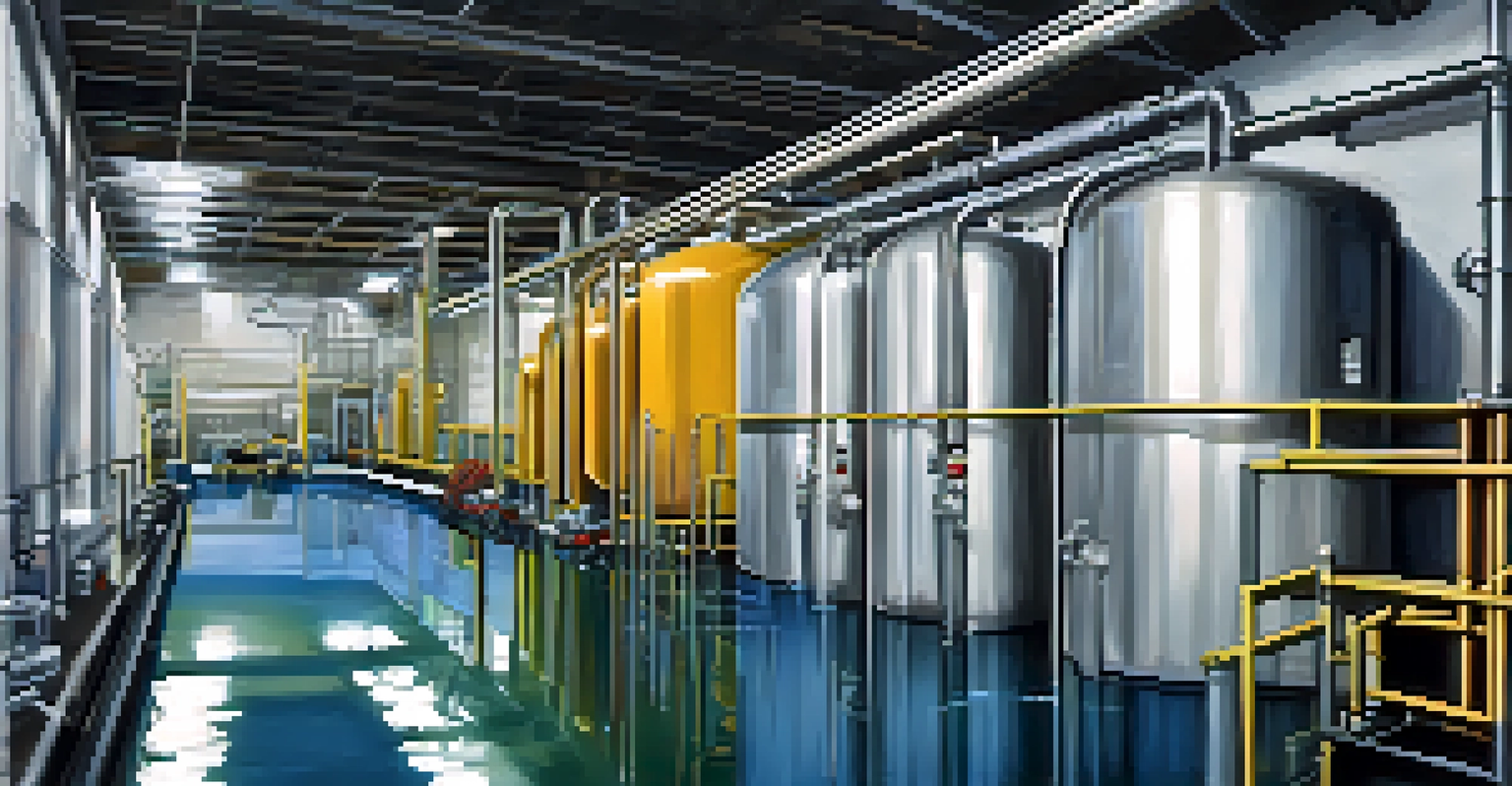Water Sources Feeding New York City: An Overview

Introduction to New York City's Water Supply System
New York City boasts one of the most extensive and complex water supply systems in the world. It provides over 1 billion gallons of fresh water daily to nearly 9 million residents. Understanding where this water comes from is essential to appreciating the city’s infrastructure and sustainability efforts.
Water is the driving force of all nature.
The water supply system consists of a network of reservoirs, aqueducts, and treatment facilities. This intricate web ensures that clean water reaches every household and business, all while maintaining high safety standards. It’s a remarkable feat of engineering that has evolved over more than a century.
As we explore the various sources of water feeding the city, it’s important to recognize the commitment to preserving these vital resources. The management of these sources reflects not only on the city’s needs but also on environmental stewardship and future sustainability.
The Role of Upstate Reservoirs in NYC's Water Supply
Upstate New York is home to a series of reservoirs that play a critical role in supplying water to the city. The three main water supply systems are the Croton, Delaware, and Catskill watersheds, each contributing significantly to the overall water supply. These reservoirs collect rainwater and snowmelt, storing it for distribution.

The Croton watershed, the oldest of the three, provides about 10% of the city’s water. Its reservoirs, such as the Croton Falls and New Croton Reservoir, are vital for maintaining the necessary water levels. Meanwhile, the larger Delaware and Catskill systems supply the majority of the city's water, harnessing natural runoff to meet the growing demand.
NYC's Complex Water Supply System
New York City's water supply system is an extensive network of reservoirs, aqueducts, and treatment facilities that delivers over 1 billion gallons of fresh water daily to nearly 9 million residents.
These upstate reservoirs not only serve as water sources but also as recreational areas. They offer a pristine environment for hiking, fishing, and enjoying nature, highlighting the importance of conserving these spaces for both human use and natural ecosystems.
Aqueducts: The Lifelines of NYC's Water Distribution
Aqueducts are the unsung heroes of New York City's water supply system, transporting water from distant reservoirs to the city itself. The Delaware Aqueduct, for instance, is the longest continuous water supply tunnel in the world, stretching over 137 miles. It’s a remarkable engineering achievement that helps deliver about half of the city’s drinking water.
We never know the worth of water till the well is dry.
These aqueducts are crucial for maintaining water pressure and ensuring a steady flow to various neighborhoods. They’re designed to minimize evaporation and contamination, allowing for the efficient movement of clean water. The careful planning and construction of these channels reflect a deep understanding of hydrology and urban infrastructure.
Moreover, the aqueducts are regularly monitored and maintained to prevent leaks and ensure safety. This ongoing commitment to infrastructure is vital for the city’s resilience, especially in the face of increasing climate challenges.
Water Treatment: Ensuring Safety and Quality
Once the water reaches the city, it undergoes rigorous treatment processes to ensure it meets safety standards. The NYC Department of Environmental Protection (DEP) operates multiple water treatment facilities that filter and disinfect the water before it enters the distribution system. This is crucial for protecting public health.
The treatment process includes various stages, such as coagulation, sedimentation, and filtration, which remove impurities and pathogens. Chlorination is also used to disinfect the water, ensuring that it remains safe as it travels through the pipes. Continuous monitoring and testing help maintain high-quality standards.
Challenges in Water Resource Management
The city faces significant challenges such as aging infrastructure and climate change, which threaten the reliability and safety of its water supply.
The emphasis on water quality reflects the city’s commitment to providing safe drinking water. Innovations in treatment technologies further enhance the efficiency and effectiveness of this process, ensuring that NYC's water supply remains one of the best in the nation.
Conservation Efforts to Sustain Water Resources
As populations grow and climate change poses new challenges, water conservation has become increasingly important for New York City. The DEP has launched various initiatives to promote water-saving practices among residents and businesses. These efforts include educational campaigns and incentives for installing water-efficient fixtures.
Rainwater harvesting is another innovative approach gaining traction, allowing property owners to collect and reuse rainwater for irrigation and other non-potable uses. This not only reduces demand on the water supply but also helps manage stormwater runoff, benefiting the urban environment.
Community involvement is essential for successful conservation efforts. By engaging New Yorkers in water-saving practices, the city fosters a culture of sustainability that can lead to long-term positive changes in water usage habits.
Challenges Facing NYC's Water Supply System
Despite its strengths, New York City's water supply system faces several challenges. Aging infrastructure, climate change, and increased demand are significant threats that require immediate attention. Many of the city’s water mains and pipes are over a century old, making regular maintenance a top priority.
Climate change impacts, such as more intense rainfall and droughts, can alter water availability and quality. These fluctuations necessitate adaptive management strategies to ensure a consistent and safe water supply. Understanding and addressing these challenges is critical for maintaining the integrity of the water system.
Future Innovations for Sustainability
Innovative solutions, including smart technology and green infrastructure, are being explored to enhance NYC's water supply and ensure its sustainability for future generations.
Furthermore, the balance between urban development and water resource management is delicate. As the city expands, careful planning is essential to protect water sources and maintain the sustainability of the entire system.
The Future of New York City's Water Supply
Looking ahead, New York City is exploring innovative solutions to enhance its water supply system. Investments in modern technology, such as smart sensors and data analytics, are being made to improve monitoring and management of water resources. These advancements can help identify leaks and inefficiencies more quickly.
Sustainability initiatives are also at the forefront of future planning. The city is focusing on green infrastructure, such as permeable pavements and green roofs, to manage stormwater and reduce demand on the water supply. These approaches not only conserve water but also enhance urban resilience.

Ultimately, the future of New York City’s water supply relies on a collaborative effort among government agencies, communities, and individuals. By prioritizing sustainability and innovation, the city can ensure a reliable water supply for generations to come.